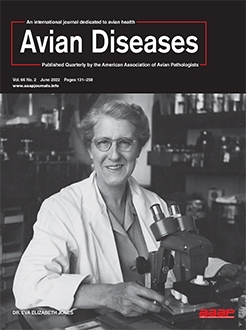Sanitary disposal of contaminated organic material during recovery from an animal disease outbreak is costly and laborious. Characterizing the thermal stability of avian paramyxovirus type 1 (APMV-1; virulent APMV-1 strains cause Newcastle disease in poultry) will help inform risk assessments on the presence of viable virus on infected premises or in organic waste from infected premises. In some environments and housing types, heat may also be used as a decontamination method. Therefore, the objective of this study was to characterize the thermal stability (i.e., decimal reduction values [D values]) of APMV-1 in poultry litter. Virus inactivation was evaluated at seven temperatures from 10.0 C through 43.3 C, at 5.5 C intervals (50–110 F in 10 F intervals), using the I2 isolate of APMV-1, a vaccine strain known to be thermally stable. A high titer of virus (approximately 108 50% egg infectious doses) was added to wood shavings based, soiled chicken litter (poultry litter). Litter with both low and high moisture levels were evaluated. Samples were collected at different time intervals, and infectious virus was titrated in embryonated chicken eggs. At high temperatures (37.8 C–43.3 C), infectious virus could not be detected after 2–7 days, whereas at lower temperatures (10 C–21.1 C), it took up to 112 days for virus to decrease to undetectable levels. Furthermore, the D values were almost always shorter in the high moisture litter.
How to translate text using browser tools
5 April 2022
The Thermal Stability of Newcastle Disease Virus in Poultry Litter
Jongseo Mo,
Christopher B. Stephens,
Erica Spackman
ACCESS THE FULL ARTICLE

Avian Diseases
Vol. 66 • No. 2
August 2022
Vol. 66 • No. 2
August 2022
avian paramyxovirus
contaminated bedding disposal
farm biosecurity
Newcastle disease virus
virus thermal stability




